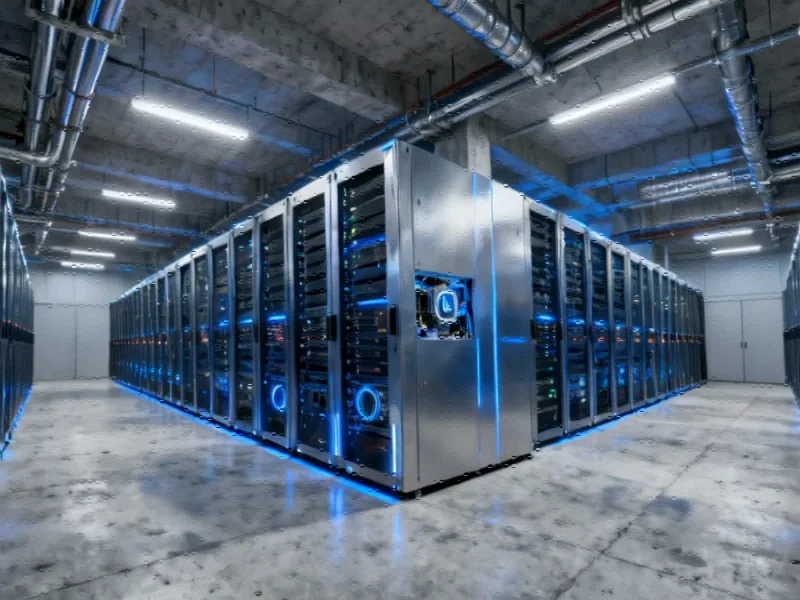The Great Pivot: From Digital Gold to AI Infrastructure
In a strategic shift that’s reshaping the cryptocurrency landscape, major Bitcoin mining companies are increasingly diversifying their operations beyond digital currency creation. These enterprises, once exclusively dedicated to solving complex mathematical problems to validate Bitcoin transactions, are now allocating significant resources to artificial intelligence and high-performance computing services. This transition represents one of the most significant industry developments in the technology sector, as companies seek more stable revenue streams beyond the notoriously volatile cryptocurrency markets.
The Volatility Problem: Why Miners Are Looking Beyond Bitcoin
Traditional Bitcoin mining operations have always been at the mercy of cryptocurrency price swings, electricity costs, and increasing competition. When Bitcoin prices plummet, mining profitability can disappear overnight, leaving companies with expensive specialized hardware and mounting operational costs. The recent diversification efforts by Bitcoin mining firms into AI and high-performance computing represent a fundamental rethinking of their business models. This strategic shift allows them to leverage their existing infrastructure—particularly their advanced computing capabilities and access to cheap energy—while reducing their dependence on cryptocurrency market cycles.
AI’s Computing Demands: A Natural Fit for Mining Infrastructure
The computational requirements for training and running sophisticated AI models have created unprecedented demand for high-performance computing resources. Crypto miners already operate vast arrays of powerful processors and graphics cards, making their infrastructure surprisingly well-suited for AI workloads. As Wall Street continues to grapple with AI’s disruptive potential across multiple sectors, these converted mining operations are positioning themselves as essential infrastructure providers for the AI revolution. The parallel processing capabilities required for cryptocurrency mining translate effectively to the matrix operations fundamental to neural network training.
Hybrid Models: Balancing Crypto and Computing Services
Most mining companies aren’t abandoning Bitcoin entirely but are instead adopting hybrid approaches. They’re dynamically allocating their computing resources based on market conditions—prioritizing Bitcoin mining during price surges and shifting to AI services during downturns. This flexibility represents a sophisticated risk management strategy that could define the next generation of related innovations in the computing sector. The ability to pivot between different computational workloads gives these companies a unique competitive advantage in both the cryptocurrency and enterprise computing markets.
The Infrastructure Advantage: What Miners Bring to AI
Crypto mining operations possess several key assets that translate well to AI services: established data center operations, advanced cooling systems, relationships with energy providers, and expertise in managing large-scale computing infrastructure. These existing capabilities significantly lower the barrier to entry for providing AI computational services. As the industry evolves, we’re seeing market trends that favor companies with this type of flexible, scalable computing infrastructure that can adapt to changing technological demands.
Broader Implications: The Convergence of Blockchain and AI
This pivot represents more than just a business strategy—it signals the beginning of a deeper convergence between blockchain technology and artificial intelligence. The computational infrastructure that underpins both technologies is increasingly interchangeable, suggesting future synergies that could drive recent technology advancements across both fields. This convergence is part of a larger technological evolution that includes everything from AI applications addressing social challenges to fundamental shifts in how we approach computational problems.
Challenges and Considerations in the Transition
The shift from pure-play Bitcoin mining to hybrid computing models isn’t without challenges. Companies must navigate different hardware requirements, develop new customer relationships, and build expertise in AI-specific workloads. Additionally, they face competition from established cloud computing providers and specialized AI infrastructure companies. The transition requires significant capital investment and strategic planning, particularly as companies like Microsoft continue updating their technology stacks to better support modern computing demands.
Global Context: Computing Power as Strategic Resource
The repositioning of crypto miners as general-purpose computing providers occurs against a backdrop of increasing global competition for computational resources. As nations recognize the strategic importance of computing power for economic and security purposes, companies that control significant computational capacity find themselves in increasingly valuable positions. This global dimension adds another layer of complexity, particularly considering how international security developments can influence technology infrastructure decisions and allocations.
The Future of Computational Infrastructure
As Bitcoin mining companies continue their pivot toward AI and high-performance computing, they’re effectively becoming the utility providers of the digital age. Their ability to offer flexible, scalable computing power on demand positions them at the center of multiple technological revolutions simultaneously. This transformation suggests that the future of computational infrastructure may be increasingly decentralized and multipurpose, capable of supporting everything from blockchain networks to advanced AI systems as demand requires.
The success of this strategic shift will depend on numerous factors, including technological adaptability, market timing, and the ability to navigate the distinct business models of cryptocurrency and enterprise computing. What’s clear is that the companies that successfully make this transition will likely emerge as important players in the broader technology ecosystem, regardless of Bitcoin’s price fluctuations.
This article aggregates information from publicly available sources. All trademarks and copyrights belong to their respective owners.
Note: Featured image is for illustrative purposes only and does not represent any specific product, service, or entity mentioned in this article.



